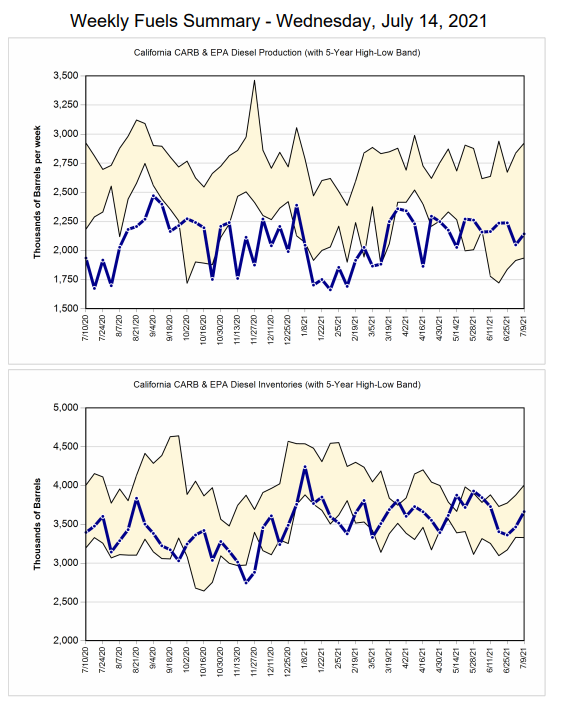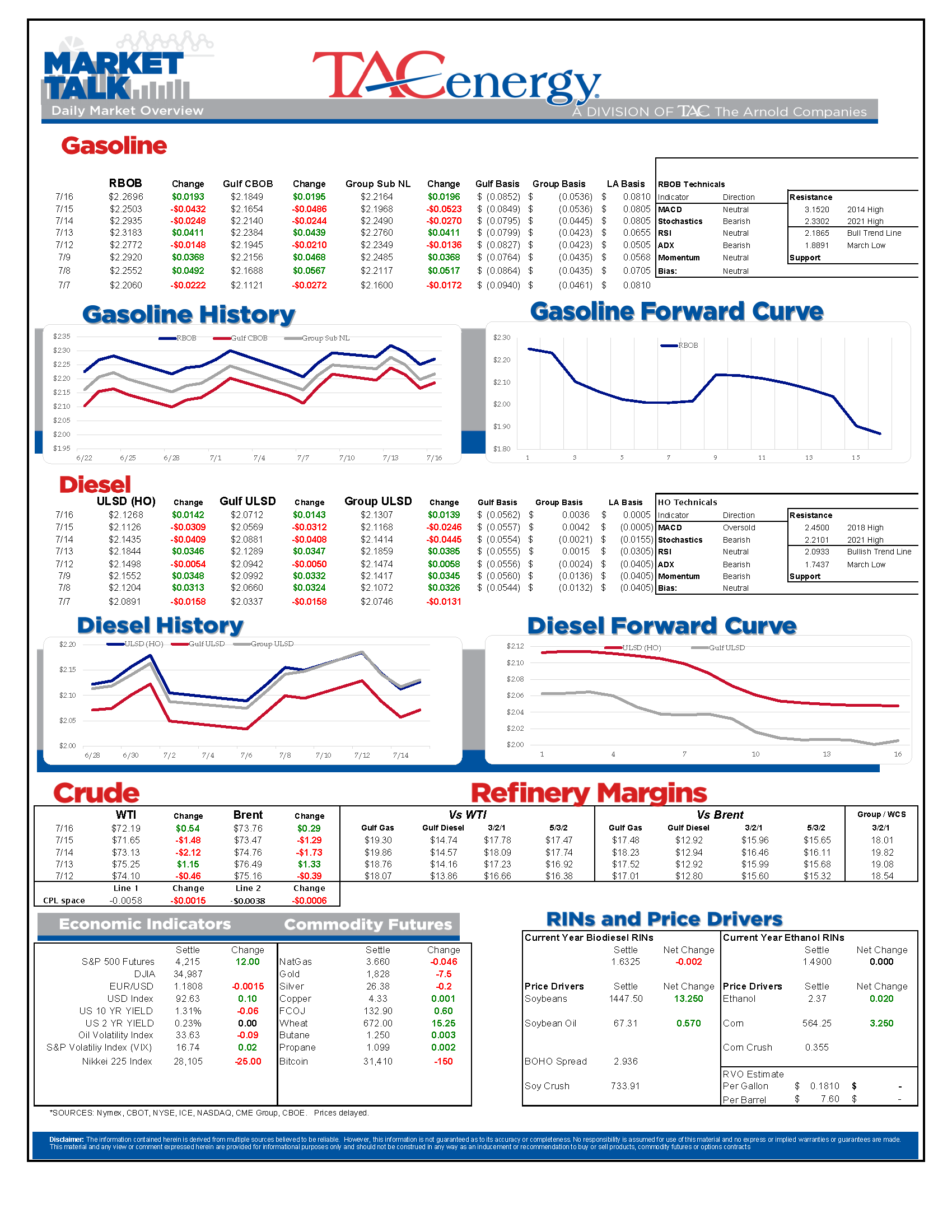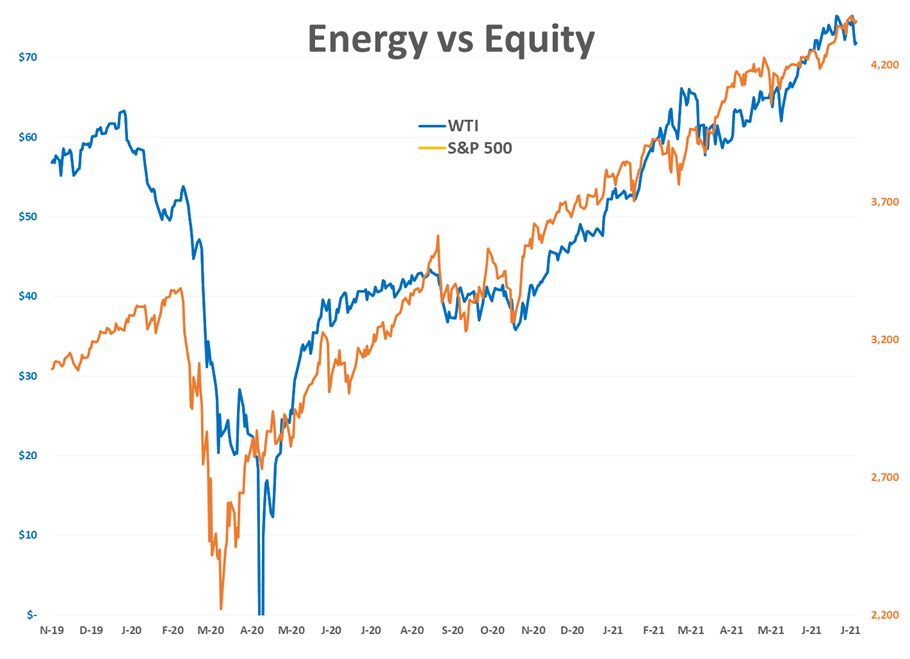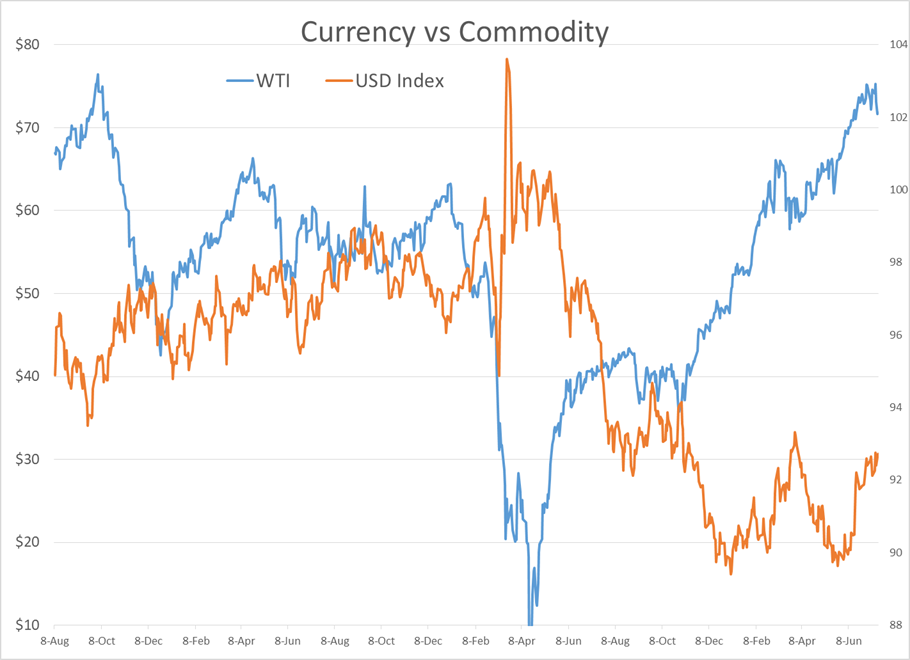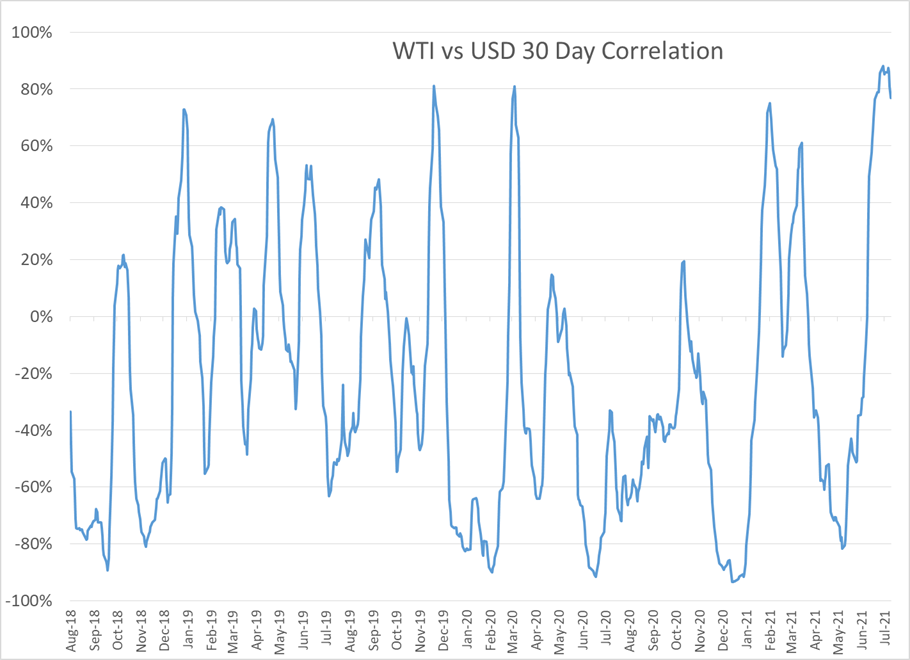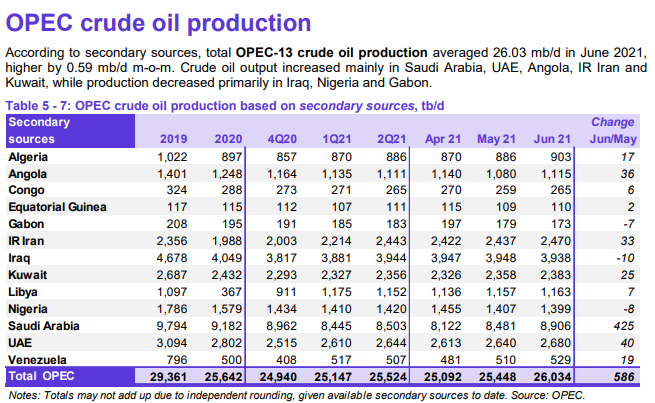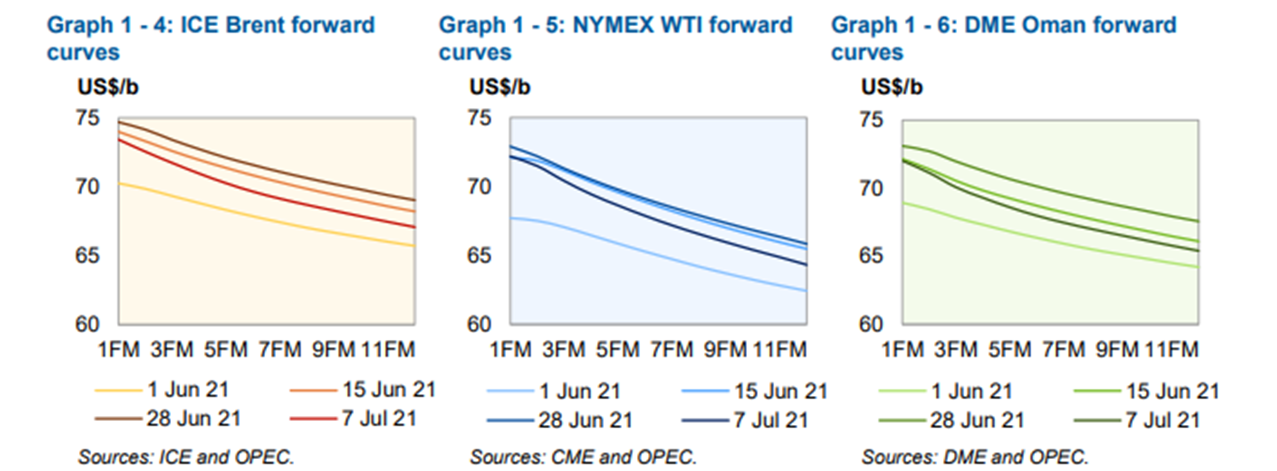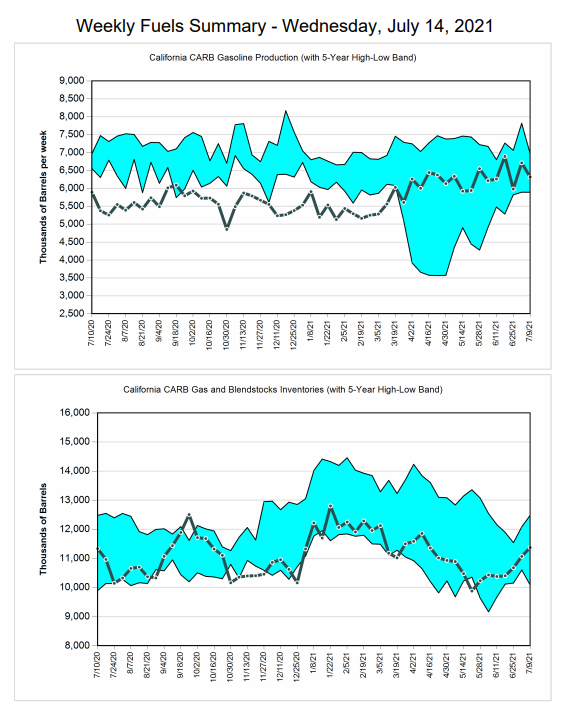Equity And Energy Markets Sent Sharply Lower

Surging COVID case counts, a new OPEC deal, and the risks of a cyber-war between the world’s two largest economies all seem to be combining to send equity and energy markets sharply lower to start the week, putting the bullish trend that’s pushed prices higher for 8 months at risk.
All of the big 4 petroleum contracts are currently trading below the weekly trend-lines that have pushed prices higher since November. ULSD is looking the worst from a technical perspective, already moving below the lows we saw during the short-lived sell-off two weeks ago, and coming within a penny of taking out its June lows. If these trend lines break, there’s a strong argument based on the charts that we could see a $10/barrel drop in crude and $.25/gallon drop in products before the end of summer. Don’t bank on it just yet however, we still need to see prices settle and hold at these lower levels before we can call an end to the trend.
OPEC & Friends ratified their agreement to add 400,000 barrels/day of held back production starting in August, and are planning to continue increasing at that level until output returns to pre-COVID levels sometime late next year. While the market is moving lower following that news, this is actually less than the 500,000 barrels/day many expected to see added monthly, and should leave global inventories on a drawdown path for the rest of this year, so it would seem that the selling today has more to do with concerns over the spread of COVID and Chinese Computer viruses and less with a sudden surge in oil output.
While the news will focus on the accusations of state-sponsored hacking, China is steadily waging war on global refiners, ramping up run rates and seeing record diesel exports which is contributing to refiners in other parts of the world contemplate permanent shut downs. They aren’t just expanding operations at home either, as reports announce a new $3 billion refinery will be funded and built by China’s national engineering firm in Iraq.
Baker Hughes reported 2 more oil rigs were put to work in the US last week, matching the average weekly change that we’ve seen over the past 2.5 months. Notable this week is that the “other” non-specified basins saw an increase of 6 rigs (10% of their total) while the Permian stayed flat for a 4th week, and the Eagle Ford and Woodford basins both declined by two. The increases in relatively unknown basins is consistent with a WSJ article last week that highlighted how speculative grade oil companies are (not surprisingly) raising large amounts of capital through low-rate bond issuances.
If you’re feeling whiplashed by the recent market swings, don’t beat yourself up, the people who bet with other people’s money for a living don’t appear to be doing very well lately. The weekly Commitments of Traders report showed that Money Managers (aka hedge funds) jumped back off the energy bandwagon 2 weeks ago just before prices bounced sharply off of the 8 month old trend-lines, and then added to their positions last week, just in time for another sell-off. The weekly moves continue to be relatively small – particularly in crude oil contracts – but products are seeing larger moves.
Click here to download a PDF of today's TACenergy Market Talk.
Latest Posts
Week 17 - US DOE Inventory Recap
The Energy Complex Is Trading Modestly Lower So Far This Morning With WTI Crude Oil Futures Leading The Way
Energy Futures Are Drifting Quietly Higher This Morning
Refined Products Holding Close To Break Even While Oil Prices Are Losing Just Under 1%
Social Media
News & Views
View All
Week 17 - US DOE Inventory Recap

The Energy Complex Is Trading Modestly Lower So Far This Morning With WTI Crude Oil Futures Leading The Way
The energy complex is trading modestly lower so far this morning with WTI crude oil futures leading the way, exchanging hands $1.50 per barrel lower (-1.9%) than Tuesday’s settlement price. Gasoline and diesel futures are following suit, dropping .0390 and .0280 per gallon, respectively.
A surprise crude oil build (one that doesn’t include any changes to the SPR) as reported by the American Petroleum Institute late Tuesday is taking credit for the bearish trading seen this morning. The Institute estimated an increase in crude inventories of ~5 million barrels and drop in both refined product stocks of 1.5-2.2 million barrels for the week ending April 26. The Department of Energy’s official report is due out at it’s regular time (9:30 CDT) this morning.
The Senate Budget Committee is scheduled to hold a hearing at 9:00 AM EST this morning regarding a years-long probe into climate change messaging from big oil companies. Following a 3-year investigation, Senate and House Democrats released their final report yesterday alleging major oil companies have internally recognized the impacts of fossil fuels on the climate since as far back as the 1960s, while privately lobbying against climate legislation and publicly presenting a narrative that undermines a connection between the two. Whether this will have a tangible effect on policy or is just the latest announcement in an election-yeardeluge is yet to be seen.
Speaking of deluge, another drone attack was launched against Russian infrastructure earlier this morning, causing an explosion and subsequent fire at Rosneft’s Ryazan refinery. While likely a response to the five killed from Russian missile strikes in Odesa and Kharkiv, Kyiv has yet to officially claim responsibility for the attack that successfully struck state infrastructure just 130 miles from Moscow.
The crude oil bears are on a tear this past week, blowing past WTI’s 5 and 10 day moving averages on Monday and opening below it’s 50-day MA this morning. The $80 level is likely a key resistance level, below which the path is open for the American oil benchmark to drop to the $75 level in short order.
Click here to download a PDF of today's TACenergy Market Talk.

Energy Futures Are Drifting Quietly Higher This Morning
Energy futures are drifting quietly higher this morning as a new round of hostage negotiations between Israel and Hamas seem to show relative promise. It seems the market is focusing on the prospect of cooler heads prevailing, rather than the pervasive rocket/drone exchanges, the latest of which took place over Israel’s northern border.
A warmer-than-expected winter depressed diesel demand and, likewise, distillate refinery margins, which has dropped to its lowest level since the beginning of 2022. The ULSD forward curve has shifted into contango (carry) over the past month as traders seek to store their diesel inventories and hope for a pickup in demand, domestic or otherwise.
The DOE announced it had continued rebuilding it’s Strategic Petroleum Reserve this month, noting the addition of 2.3 million barrels of crude so far in April. Depending on what the private sector reported for last week, Wednesday’s DOE report may put current national crude oil inventories (include those of the SPR) above the year’s previous levels, something we haven’t seen since April of 2022, two months after Ukraine war began.
The latest in the Dangote Refinery Saga: Credit stall-out, rising oil prices, and currency exchange.
Click here to download a PDF of today's TACenergy Market Talk.
